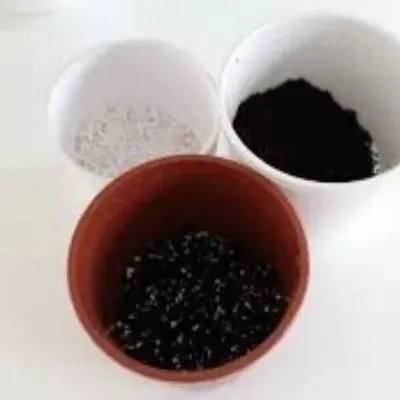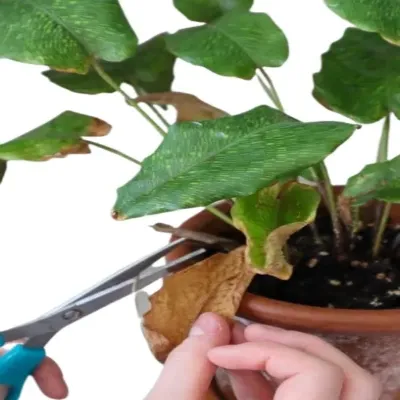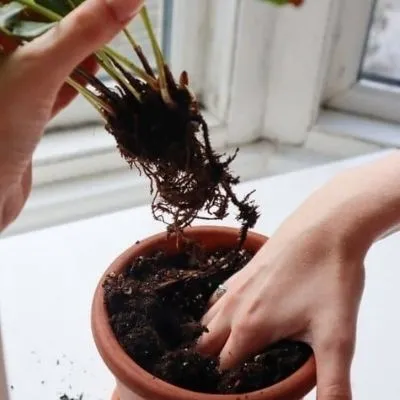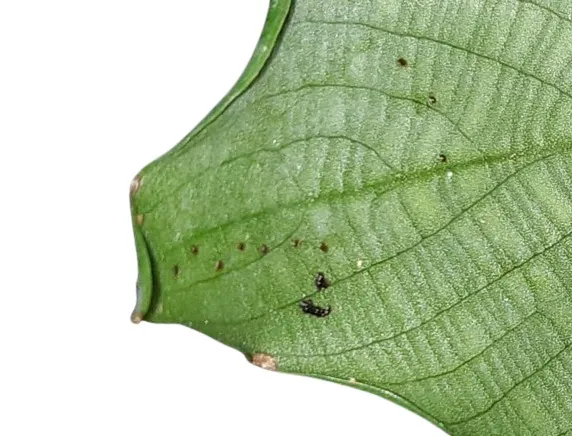Calathea Musaica attracts plant lovers because of its adorable foliage with dark and light-colored patterns. Calathea Mosaic is a member of the Marantaceae family and is also famous as Network Calathea due to its characteristic mosaic pattern like a complex network on its foliage.
Popular Family Members: Calathea Medallion, Calathea Zebrina, Calathea Rufibarba, Calathea Ornata, Calathea Orbifolia, Rattlesnake Plant
Related Products:
How to care for Calathea Musaica?
Calathea Musaica is native to Brazil; consequently, they flourish in the environment, similar to the native climate. Therefore, it is essential to take care of the humidity, light, temperature, and watering requirement of that space where you will place the plants. This article will furnish you with all the necessary information to take care of your Calathea Mosaica plant.

Bringing the Calathea Musaica to home
Adding one more Calathea to your indoor Calathea collection might feel exciting as the vividly colored foliage of these natural beauties brightens up any living space. However, bringing a new houseplant to your home requires some preventive measures. These precautions are vital to avoid spreading any prevalent disease or infestation to your existing healthy houseplants from the new plant.
Please check the plant carefully, focusing mainly on the leaves and their undersides. Typically, the pests tend to hide on the lower side of the foliage. If you any infestation, keep the plant separate from other plants. Initially, try to remove the pests by manual cleaning or pruning the sick leaves.
Select the appropriate pesticide spray by identifying the type of infestation first. The use of suitable pest spray will be beneficial to get rid of the infestation. Similarly, use fungicides to treat any visible fungal disease.
Stunning Calathea Network plant
We recommend keeping the new plant isolated from existing houseplants for two to three weeks. Add the new Calathea Network plant to your indoor collection once you are fully satisfied with the new addition’s health.

Humidity and Temperature
Calathea plants require much humidity in its surrounding. Back in their native area Brazil, they grow predominantly under the shades of tropical forest, and due to excessive rain, the humidity level is high. Therefore, try to provide the exact humidity level to make the plant thrive.
If your Calathea foliage edges start browning, it indicates that the humidity level for the plant’s living space is low. Low humidity usually happens in winter when the central heating system reduces the humidity from the plant’s surroundings.
We advise using an adequate humidifier to provide the optimum humidity to Calathea Network to avoid this situation. Using a hygrometer to check the indoor humidity is also helpful for monitoring. On alternative days, you may mist the plant to ensure leaves are getting enough moisture. However, please avoid excessive misting and ensure water particles do not remain on leaves for long durations, as they can cause fungal diseases.
The ideal temperature requirement is 65°F to 85°F for the best growth of Calathea Musaica. The plant will not grow and negatively impacts its health below and above this range. The plant’s leaves will wilt and curl if exposed to high heat. Ideally, place the plant where it does not receive temperature variations like a cold draft or high heat from internal heating.

Soil Requirements for Calathea Musaica
Calathea Musaica requires good drainage soil that holds the moisture. You can prepare your soil mix by mixing perlite, peat moss, and houseplant potting soil. The soil mix shall contain two parts perlite, which improves ventilation and water drainage quality. Include two parts of peat moss in the mix to enhance the moisture-retaining capability, and finally, one part of houseplant soil to make a perfect soil mix for Calathea Network plant.
The soil’s PH level is also an essential factor for Calathea Musaica. Calathea love slightly acidic soil to flourish, and the ideal PH level of soil for optimum growth is 6.5.

Soil mix preparation

Light Requirement
Calathea Musaica grows healthy if provided with indirect sunlight. These plants hail from tropical forests in Brazil, where they grow under the canopy of large trees and are protected from direct sunlight due to the dense foliage of trees. Some houseplant owners think that Clathea Musaica grows well in dark shaded areas.
On the contrary, the best permanent spot for your Network Calathea is north or east-facing windows or a few feet away from west-facing windows, where the plant will get indirect medium light. As the plant requires medium gentle light, direct sunlight exposure will sunburn the foliage, whereas if kept in low light, the leaves will discolor, and the gorgeous pattern will fade.

How often should I water my Calathea Musaica?
Calatheas species are notorious for becoming unhealthy because of over or under-watering. To maintain Network Calathea’s vibrant green, healthy look, you must devise a watering routine and consequently precisely follow the routine.
Water the Calathea Musaica twice a week during the growing season of spring and summer. Please verify, excess water always flows out of the pot’s soil. If excess water stays in the potting soil, it may cause waterlogging conditions, leading to the rotting of roots.
On the contrary, dehydration will impair the plant’s fresh look if your plant is not getting enough water. Curling up the leaves is a prime indication that the plant is low in moisture due to low watering or exposure to high heat. In both cases plant requires more water intake.
We strongly recommend using distilled or filtered water to fulfill your Calathea’s Musaica water needs. The tap water may contain high Florine, chlorine, and other minerals. Calathea Musaica does not tolerate these impurities, and the impurities may cause the foliage edges to be brown and crispy. Additionally, never water your Calathea Musaica plant with warm or cold water. Always use water at room temperature for watering.

Fertilizing
Network Calathea requires liquid fertilizer once a month in its growing season, starting from early spring to late summer. Regular fertilizing during the growing season will boost plant health. Therefore use common nitrogen-based houseplant fertilizer for a healthy look and beautiful foliage color.
We recommend moistening the soil before applying the fertilizer. Please ensure the soil is not dry because applying fertilizer on dry soil can lead to roots burning and damage. Please follow the instructions on the fertilizer package for correct concentration. If not sure, dilute the liquid fertilizer to one-quarter of strength by adding water. Fertilizing less is better than overfertilizing.
Nitrogen-rich house plant fertilizers have the best effect on the growth of Calathea Network plant.

Pruning and planting of Calathea Musaica
Calathea Musaica requires pruning regularly. Please take necessary action to remove the unhealthy, wilted leaves or discolored leaves. Elimination of infected or yellow leaves from plants stimulates the new sprout’s development. As the plant grows, older leaves start turning brown or yellow, giving the plant an unhealthy look. Frequent pruning will further beautify the stunning appearance of the Network plant.

Pruning of leaves
Occasional cleaning of large gorgeous leaves of Calathea Musaica will boost the plant looks. Please use a damp cloth for cleaning purposes. It is not advisable to use any shine product on the leaves. Network Calathea leaves have tiny pores for aspiration, and a layer of shine product can block these pores. Plant leaves health will degrade due to lack of air access.

Is Calathea Musaica pet friendly?
Calathea Musaica’s large mosaic patterned leaves and harmless nature makes it a perfect houseplant. The plant us completely safe for pets and kids and you should not be worrying if kida and pets are playing around the plant.

Propagation of Calathea Musaica
The best way to propagate Calathea Musica is from the baby plants. Small shots will appear near the mother plant. The minutes you see small baby plants come out of soil beside the main plant, it’s time to propagate the Calathea.

Propagation of calathea Musaica
Follow these steps to propagate your network plant successfully without damaging the mother Calathea plant.
Propagation through Roots:

Re-potting of Network Calathea Musaica
The Calathea Musaica plant growth depends on the expansion of roots in the pot. Depending upon the plant growth rate, the plant will become root-bound in around two years. The bound root condition will negatively impact the plant growth as there is no room for roots growth.
Secondly, it can affect the drainage quality of the soil. Furthermore, newly purchased plants are usually in smaller pots, and it is necessary to repot them in bigger pots to provide the essential space for roots growth.

Re-potting
We recommend carrying out the repotting of Network Calathea every two years, and it will help rejuvenate the soil medium in which the plant is growing.
Please read through the following simple steps to understand the procedure of repotting.

Calathea Musaica Diseases and Pests
Calathea Musaica is susceptible to root rot if it stays long in soggy, waterlogged soil. Excessive watering and poor drainage cause root rot. Roots staying too much in water start rooting and are possibly affected by fungal disease. To avoid overwatering, always check the soil dryness before watering the Calathea. If you see any root rot symptoms, cut the rotted roots and repot the plant in a new soil mix.
Please ensure to carry out frequent inspection of your Calathea Musaica for timely detection of attacks from pests and take immediate necessary remedial action. The infestation that can attack Calathea Musaica is following.
Please ensure to carry out frequent inspection of your Calathea Musaica for timely detection of attacks from pests and take immediate necessary remedial action. The infestation that can attack Calathea Musaica is following.
Spider Mites
Spider mites usually hide underneath the leaf and use the web to cover themselves. If you notice Spider mites on the leaves, clean the leaves with a solution of four parts distilled water and one part rubbing alcohol. Apply this solution to leaves with cotton and repeat the process twice a week. If the treatment doesn’t work, remove the infected leaves from the Network Calathea plant.
Thrips
Thrips are also insects that use leaf sap for their growth. If you see any yellow or brown spots on the leaf, it’s a sign of thrips contagion.To get rid of them, wash the leaves with insecticidal soap or rub them with neem oil; if a thrips attack is sworn, remove the leaf and spray neem oil on Calathea to protect against further infection.
Mealybugs
These insects also feed on the leaf sap and damage the Calathea plant. The leaves will start yellowing in color or curling. Spray the leaves with rubbing alcohol solution or wipe them with neem oil for a quick remedy.
Calathea Network Musaica’s common problems & queries
Yellowing Leaves
Calathea Musaica plants leave start turning yellow when it’s overwatered. Please review your watering program and ensure partial dryness of soil before rewatering. If you are not sure about soil moisture level, a soil moisture meter will guide you correctly for rewatering.
However, if your soil is severely waterlogged and plants’ health is degrading rapidly, take immediate action and repot the plant in dry soil.
Why are brown spots appearing on the leaves of my Calathea Musaica?

Brown spots on Calathea
These signs mainly indicate that Network Calathea’s surroundings are less humid, and the plant is not getting adequate humidity. Put the plant in a humid place like a washroom, or create a more humid environment through a humidifier.
Another cause of leaves’ brown edges can be the water quality. If your tap water has high Flourine, Chlorine, or mineral content, it can hamper the plant health and cause the edges of leaves to turn brown. We recommend using distilled or rainwater to fulfill the needs of the Calathea Musaica plant.
Why is Calathea Musaica Leaves Curling?
Calathea Musaica can’t tolerate dryness. The leaves of the plant naturally curl when exposed to high heat. Low moisture content and plant dehydration can cause curling and drooping of leaves. Carry out the deep watering of the plant and keep the soil moist to avoid curling and drooping of leaves.
Is misting well for Network Calathea plants?
In dry climates region, it’s helpful to create a humid environment for Calathea Musaica. Misting is a simple technique that is beneficial to maintain the plant’s required humidity level in its surroundings. However, disproportionate misting can harm plants, and residual water on leaves can cause fungal diseases.
We highly recommend not to mist the plant in the evening because if water particles stay overnight on leaves, fungal diseases will start.
Can Musaica Calathea tolerate overwatering?
Please avoid overwatering as it is the primary cause of problems related to Musaica Calathea. Please make sure that the pot’s drain hole is not blocked. Establish a correct watering routine and firmly follow it to keep the plant healthy.
What is a suitable place for Calathea Musaica indoor?
A suitable indoor spot for Calathea Musaica is where the humidity level is high, and lots of diffused indirect light is present. A North and east-facing window is the best permanent spot for this beauty.
Do Calathea Musaica’s growth affected by low light?
Calathea genre is native to Brazil tropical forest, and they flourish under shades of trees, so they require medium light. Intense and low light affects plant health.
How to save my dying Calathea Musaica?
Firstly, diagnose the leading cause of problems related to the plant. If your Calathea Musaica leaves have too much yellowing, the potential reason is over-watering. Decrease the water input to the plant, ensuring water only when the dirt has partially dried.
Root decaying can be included if the yellowing of leaves is predominantly at the bottom near the roots. Evaluate the roots and if you observe a sign of rotting, remove the unhealthy roots and repot the plant in fresh soil.
Moreover, if the Calathea leaves’ edges are brownish colored, the plant is not obtaining adequate humidity. Elevate your home’s humidity level to resolve the problem, or place the plant in a moister area like a bathroom. If the leaves midspan is stained or discolored, inappropriate sunlight exposure could be the reason. Refer to our artical on how to revive a dying Calathea for more details.


